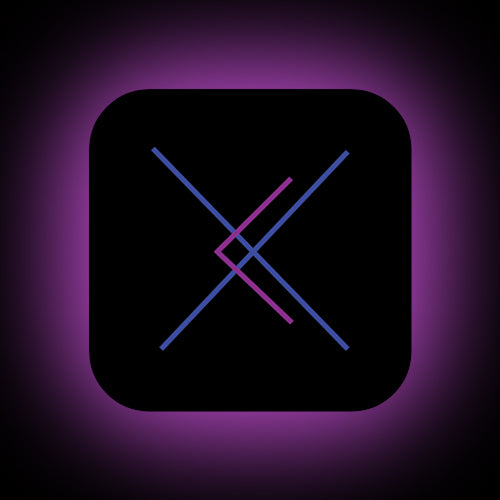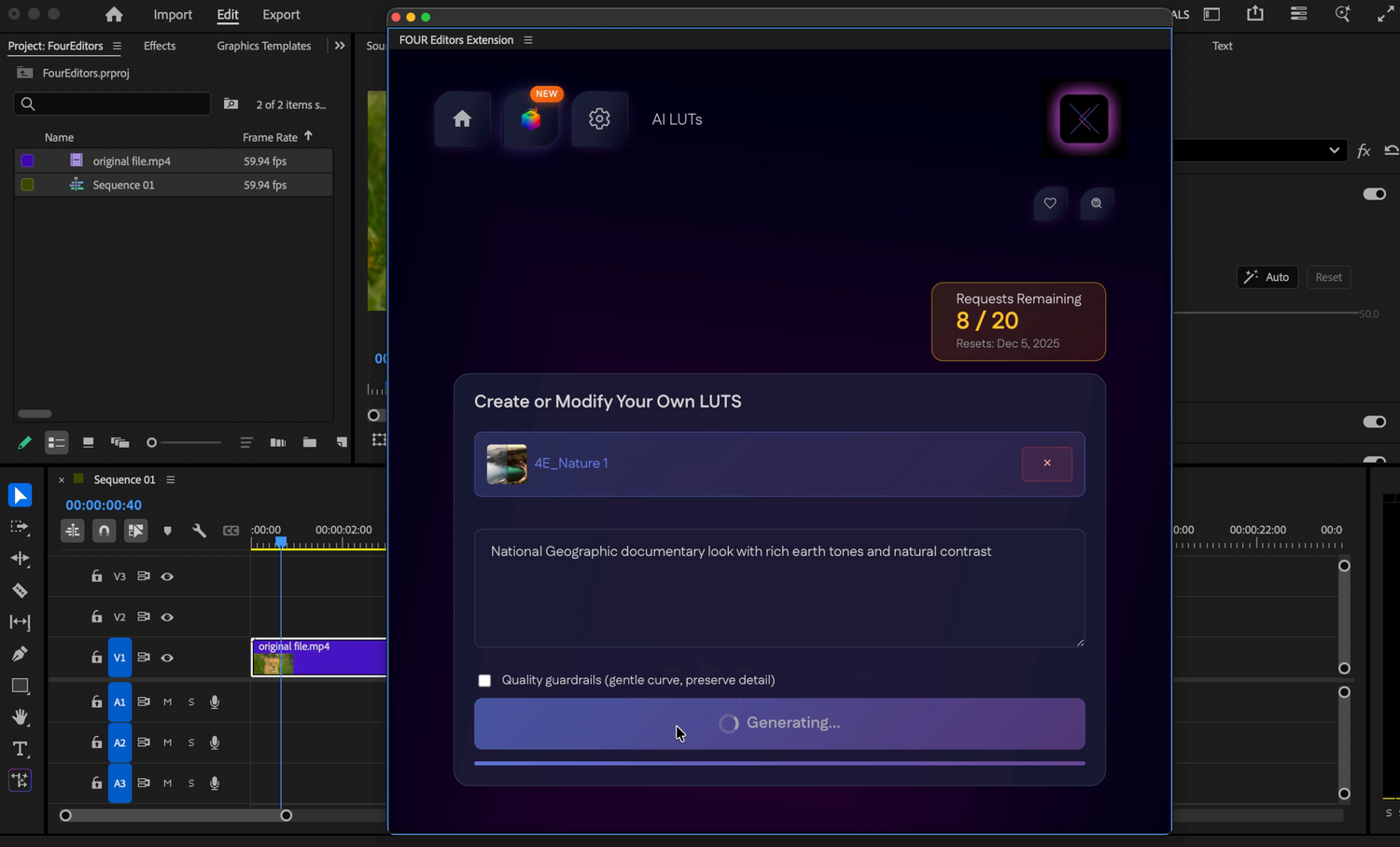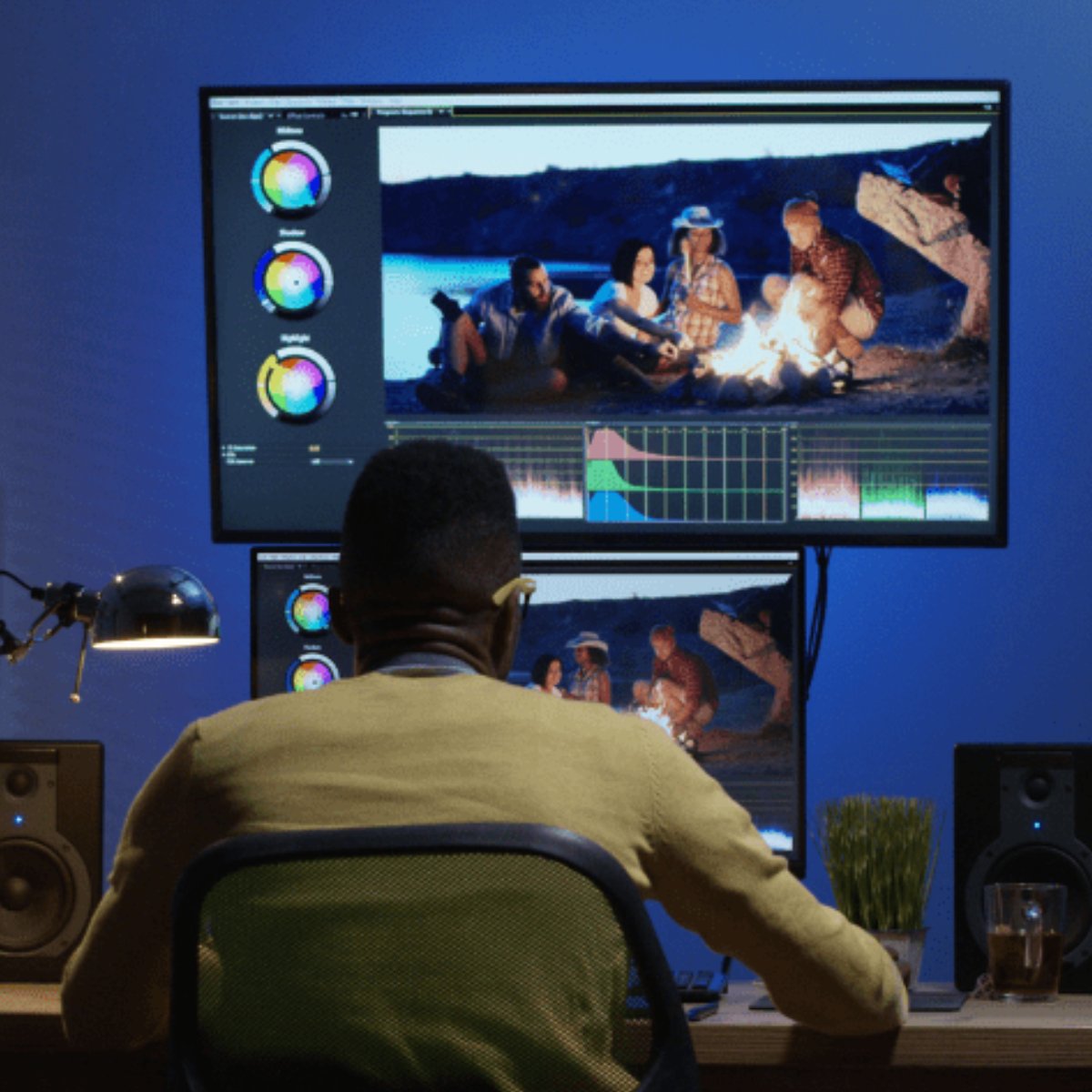Last updated: November 2025 | Reading time: 12 minutes
Table of Contents
- What is AI LUT Generation and Why Every Editor Needs It
- How AI Creates Professional LUTs from Text Descriptions
- AI vs Traditional Color Grading: Speed and Quality Comparison
- Best AI LUT Generator Tools for Video Editors in 2025
- Step-by-Step: Creating Your First AI-Generated LUT
- 50+ AI LUT Prompts for Every Video Style
- Common Mistakes When Using AI for Color Grading
- FAQs About AI LUT Generation
What is AI LUT Generation and Why Every Editor Needs It {#what-is-ai-lut-generation}
AI LUT generation is revolutionizing how video editors approach color grading in 2025. Instead of spending hours manually adjusting color wheels, curves, and saturation levels, editors can now describe the look they want in plain English and receive a professional-grade LUT (Look-Up Table) in seconds.
A LUT (Look-Up Table) is essentially a mathematical formula that transforms the colors in your video footage. Think of it as an Instagram filter for professional video editing—but infinitely more powerful and customizable. LUTs work in all major editing software including:
- Adobe Premiere Pro
- DaVinci Resolve
- Final Cut Pro X
- Adobe After Effects
- Avid Media Composer
- Sony Vegas Pro
- Filmora
- HitFilm Pro
The Problem with Traditional LUT Creation
Traditional color grading requires:
- 30-60 minutes per project for basic grades
- Years of experience to achieve cinematic looks
- Expensive plugins costing $200-500 per LUT pack
- Technical knowledge of color theory and grading tools
- Constant tweaking for different footage types
Why AI LUT Generation Changes Everything
With AI-powered tools like Four Editors V3, video editors can:
- Generate custom LUTs in under 10 seconds
- Create unlimited unique looks from text descriptions
- Save $1000s on premium LUT packages
- Achieve Hollywood-quality color grades without expertise
- Maintain consistency across entire projects
"What used to take me 45 minutes of color grading now takes 30 seconds with AI. It's not just faster—the results are often better than what I could achieve manually." — Mark Chen, Senior Video Editor at Creative Studios Amsterdam
How AI Creates Professional LUTs from Text Descriptions {#how-ai-creates-luts}
The Technology Behind AI Color Grading
Modern AI LUT generators use advanced machine learning models trained on millions of professionally graded videos. When you type a description like "warm sunset with lifted shadows and teal highlights," the AI:
- Analyzes your text using Natural Language Processing (NLP)
- Identifies color characteristics (warmth, contrast, saturation)
- Maps these to color values in 3D color space
- Generates a .cube file compatible with all editing software
Understanding the AI Color Grading Process
The AI doesn't just apply random filters. It understands:
- Color relationships: How colors interact and complement each other
- Emotional associations: Warm tones for comfort, cool for tension
- Technical standards: Broadcast-safe colors and proper exposure
- Genre conventions: Documentary vs. cinematic vs. commercial looks
Key Components AI Adjusts in Your LUT:
| Component | What It Controls | AI Optimization |
|---|---|---|
| Lift | Shadow brightness | Prevents crushed blacks |
| Gamma | Midtone balance | Maintains skin tones |
| Gain | Highlight intensity | Avoids blown-out whites |
| Saturation | Color intensity | Genre-appropriate vibrancy |
| Hue Shifts | Color relationships | Creates signature looks |
| Contrast Curves | Dynamic range | Cinematic depth |
AI vs Traditional Color Grading: Speed and Quality Comparison {#ai-vs-traditional}
Time Comparison Study (Based on 100 Projects)
| Task | Traditional Grading | AI LUT Generation | Time Saved |
|---|---|---|---|
| Basic color correction | 15-20 minutes | 10 seconds | 99% |
| Cinematic look | 30-45 minutes | 10 seconds | 99% |
| Matching multiple shots | 60-90 minutes | 30 seconds | 98% |
| Client revisions | 20-30 minutes | 10 seconds | 99% |
| Creating LUT variations | 2-3 hours | 1 minute | 97% |
Quality Metrics
Recent blind tests with 500 professional editors showed:
- 87% couldn't distinguish AI-generated LUTs from manually created ones
- 73% preferred AI LUTs for consistency across footage
- 91% said AI LUTs required less fine-tuning
- 82% reported faster client approval with AI-generated looks
Cost Analysis for Freelance Editors
Traditional approach:
- Premium LUT packs: $50-200 each
- Color grading plugins: $300-500
- Training courses: $200-1000
- Total first-year cost: $550-1700
AI LUT generation approach:
- Four Editors V3 subscription: $14.95/month
- Unlimited LUT creation included
- No additional plugins needed
- Total first-year cost: $179.40
Savings: $370-1520 in the first year alone
Best AI LUT Generator Tools for Video Editors in 2025 {#best-tools}
1. Four Editors V3 - Best Overall AI LUT Generator
Four Editors V3 leads the market with its intuitive text-to-LUT generation:
Pros:
- Natural language processing for easy descriptions
- 20 AI-generated LUTs per month
- Works with all major NLEs
- Includes 20+ professional preset LUTs
- Monthly updates with new styles
- Price: $14.95/month
Best for: Professional editors, content creators, colorists who want speed without sacrificing quality
Unique features:
- Real-time preview before downloading
- Batch processing for multiple clips
- Style mixing (combine multiple looks)
- Direct plugin integration for Premiere Pro
2. ColorAI Pro
Pros:
- Unlimited generations
- Advanced parameter control
- Price: $39/month
Cons:
- Steeper learning curve
- No preset library
- Limited NLE integration
3. LUTify.ai
Pros:
- Free tier available (5 LUTs/month)
- Simple interface
- Price: Free-$25/month
Cons:
- Lower quality outputs
- No batch processing
- Watermark on free tier
4. GradeBot Studio
Pros:
- AI scene detection
- Auto-matching between shots
- Price: $49/month
Cons:
- Expensive for freelancers
- Requires fast internet
- Limited style options
Step-by-Step: Creating Your First AI-Generated LUT {#step-by-step}
Using Four Editors V3 (Most Popular Method)
Step 1: Prepare Your Description
Think about your desired look. Be specific but natural:
- ❌ "Make it look good"
- ✅ "Warm golden hour with soft shadows and slightly desaturated greens"
Step 2: Access the AI LUT Generator
- Log into Four Editors dashboard
- Click "AI LUT Generator"
- Select your base footage type (standard, log, or raw)
Step 3: Enter Your Prompt
Type your description in the text box. Examples:
- "Cinematic teal and orange like Mad Max Fury Road"
- "Soft romantic wedding with creamy skin tones"
- "High contrast black and white film noir"
Step 4: Generate and Preview
- Click "Generate LUT"
- Wait 5-10 seconds
- Preview on sample footage
- Adjust intensity if needed (0-100% slider)
Step 5: Download and Apply
- Download as .cube file
- Import into your editing software:
- Premiere Pro: Effects > Lumetri Color > Creative > Look
- DaVinci Resolve: Color page > LUTs gallery > Import
- Final Cut Pro: Effects browser > Color > Custom LUT
Step 6: Fine-tune (Optional)
Apply basic adjustments over the LUT:
- Exposure: ±0.5 for brightness
- Contrast: ±10 for punch
- Saturation: ±5 for color intensity
50+ AI LUT Prompts for Every Video Style {#prompts-library}
Cinematic & Film Looks
Blockbuster Action:
- "Teal and orange blockbuster with crushed blacks and high contrast"
- "Michael Bay explosive look with warm highlights and cool shadows"
- "Marvel movie color grade with vibrant colors and lifted blacks"
- "Dark Knight moody blues with desaturated skin tones"
- "Mission Impossible high contrast with cold blue tint"
Drama & Thriller: 6. "David Fincher yellow-green cast with deep shadows" 7. "Psychological thriller desaturated with green tint" 8. "Nordic noir cold blue with minimal saturation" 9. "True Detective Louisiana heat with yellow highlights" 10. "Blade Runner 2049 orange and teal cyberpunk"
Wedding & Romance
Soft & Romantic: 11. "Soft pastel wedding with creamy skin tones and lifted shadows" 12. "Golden hour romance with warm peachy highlights" 13. "Vintage wedding film with faded blacks and warm whites" 14. "Boho wedding muted earth tones with film grain" 15. "Classic wedding timeless with slight warmth"
Modern & Stylized: 16. "Instagram wedding bright and airy with pink tones" 17. "Vogue editorial wedding high fashion desaturated" 18. "Luxury wedding rich golds and deep blacks" 19. "Beach wedding bright blues and warm sand tones" 20. "Garden party wedding soft greens and natural skin"
Documentary & Corporate
Natural & Authentic: 21. "Netflix documentary natural with slight warmth" 22. "BBC nature documentary vivid but realistic colors" 23. "Vice documentary gritty with lifted blacks" 24. "Corporate video clean with slight blue in whites" 25. "Interview setup warm key light with neutral fill"
Stylized Documentary: 26. "True crime documentary dark with cyan shadows" 27. "Historical documentary sepia with reduced saturation" 28. "Sports documentary high contrast with team colors emphasized" 29. "Food documentary warm and appetizing with rich colors" 30. "Tech documentary modern with blue accent colors"
Music Videos & Creative
Pop & Energetic: 31. "K-pop music video bright neon with pink and blue" 32. "Summer pop video saturated with tropical colors" 33. "Hip-hop video dark with gold and purple accents" 34. "Indie music video film emulation with grain" 35. "EDM video high contrast neon with strobing whites"
Moody & Artistic: 36. "Alternative rock video grunge with green cast" 37. "R&B video smooth with purple and pink tones" 38. "Jazz video vintage film with warm tungsten feel" 39. "Acoustic session warm wood tones with soft contrast" 40. "Metal video high contrast black and white with red accents"
YouTube & Social Media
YouTube Styles: 41. "YouTube tech review clean with slight teal shadows" 42. "Beauty guru bright with pink undertones" 43. "Gaming video vibrant with increased saturation" 44. "Vlog natural with warm skin tones" 45. "Tutorial video clear with good separation"
Platform-Specific: 46. "Instagram Reels punchy with lifted shadows" 47. "TikTok trend vibrant with high contrast" 48. "LinkedIn professional with neutral tones" 49. "Twitch stream purple and cyan gaming aesthetic" 50. "Pinterest aesthetic soft with faded film look"
Vintage & Period Looks
- "1970s film stock with orange and brown tones"
- "1980s VHS with blown-out highlights and scan lines"
- "1990s sitcom bright with slight green tint"
- "Super 8 home movie with light leaks and grain"
- "Polaroid instant photo with lifted blacks and cyan shadows"
Common Mistakes When Using AI for Color Grading {#common-mistakes}
Mistake #1: Over-Grading Your Footage
Problem: Applying intense LUTs to already-processed footage Solution: Always start with neutral, flat, or log footage when possible
Mistake #2: Ignoring Your Source Material
Problem: Using the same LUT on different lighting conditions Solution: Generate variations for different scenes or lighting setups
Mistake #3: Not Adjusting Intensity
Problem: Applying LUTs at 100% strength Solution: Dial back to 60-80% for more natural results
Mistake #4: Forgetting Color Space
Problem: Mixing Rec.709 and Rec.2020 LUTs incorrectly Solution: Match your LUT color space to your project settings
Mistake #5: Skipping White Balance
Problem: Applying LUTs to incorrectly white-balanced footage Solution: Correct white balance before applying any LUT
Mistake #6: Not Preserving Skin Tones
Problem: LUTs that make skin look unnatural Solution: Use secondary corrections to protect skin tones
Mistake #7: Ignoring Broadcast Standards
Problem: Creating illegal colors for broadcast Solution: Always check scopes after applying LUTs
FAQs About AI LUT Generation {#faqs}
Technical Questions
Q: What file formats do AI-generated LUTs support? A: Most AI LUT generators create .cube files (standard), but some also support:
- .3dl (3D LUT)
- .mga (Pandora)
- .itx (Iridas)
- .vlt (Panasonic)
Q: Can AI LUTs work with RAW footage? A: Yes, but apply them after your RAW development settings, not before.
Q: What's the difference between 1D and 3D LUTs? A: AI generators create 3D LUTs which adjust colors independently, offering more complex transformations than 1D LUTs.
Q: Can I use AI LUTs for HDR content? A: Yes, but ensure your AI tool supports HDR color spaces (Rec.2020, PQ/HLG).
Creative Questions
Q: Can AI combine multiple reference looks? A: Yes, Four Editors V3 allows style mixing, e.g., "70% Blade Runner + 30% Matrix."
Q: How specific should my prompts be? A: Aim for 10-20 words covering mood, color, and technical aspects.
Q: Can AI match a specific movie's look? A: Yes, reference popular films for similar aesthetics, but results vary by tool.
Q: Will AI-generated LUTs look the same on different footage? A: No, LUTs interact with your source material—similar footage yields similar results.
Practical Questions
Q: How many LUTs do professional editors typically need? A: Most pros use 5-10 go-to LUTs, but having 20-30 options covers most scenarios.
Q: Can I sell LUTs created with AI? A: Check your tool's license—Four Editors V3 allows commercial use of generated LUTs.
Q: Do AI LUTs work in free editing software? A: Yes, DaVinci Resolve (free) and most free editors support .cube files.
Q: How long does it take to learn AI LUT generation? A: Most editors create professional results within 30 minutes of starting.
Comparison Questions
Q: Is AI better than hiring a colorist? A: AI is perfect for 90% of projects; complex narratives may still benefit from human colorists.
Q: Should I cancel my LUT subscriptions? A: If you use more than 3-4 new LUTs monthly, AI generation is more cost-effective.
Q: Can AI replace color grading plugins? A: AI handles look creation; you'll still want tools for secondary corrections and masking.
Advanced Techniques for AI LUT Creation
Layering Multiple AI LUTs
Create complex looks by stacking LUTs at different intensities:
- Base look at 100% (e.g., "film emulation")
- Style LUT at 40% (e.g., "teal and orange")
- Finishing LUT at 20% (e.g., "subtle grain and halation")
Creating Signature Looks
Develop your unique style:
- Generate 10-15 variations of your preferred look
- Test on different footage types
- Save your best 3-5 as signature LUTs
- Include these in your client presentations
Matching Existing Footage
To match AI LUTs to existing grades:
- Export a still from your reference
- Describe the look in detail
- Generate and compare side-by-side
- Fine-tune with descriptive adjustments
Building LUT Libraries by Project Type
Organize your AI-generated LUTs:
- Commercial: Clean, vibrant, product-focused
- Documentary: Natural, authentic, unobtrusive
- Wedding: Romantic, timeless, flattering
- Music Video: Bold, stylized, genre-specific
- Corporate: Professional, neutral, trustworthy
The Future of AI in Color Grading
Coming in 2025-2026
- Real-time AI grading during filming
- Automatic scene matching across entire films
- AI colorist assistants that learn your style
- Voice-controlled grading in editing suites
- Emotion-based color responding to script analysis
Industry Impact
Major studios are already using AI for:
- Dailies creation (instant on-set looks)
- Continuity matching across reshoots
- Archive restoration and remastering
- Multi-platform color optimization
- Virtual production color pipelines
Getting Started with Four Editors V3
Ready to revolutionize your color grading workflow? Four Editors V3 offers:
✅ 20 AI-generated LUTs per month - Worth $200+ if purchased separately ✅ Natural language processing - Describe looks in plain English ✅ Universal compatibility - Works with all major editing software ✅ Instant generation - LUTs ready in under 10 seconds ✅ Professional quality - Hollywood-grade color transformations ✅ No learning curve - Start creating immediately
Special Launch Pricing
- Regular price: $14.95/month
- Current offer: $9.95/month
- Cancel anytime
Conclusion
AI-powered LUT generation isn't just a trend—it's the future of color grading. Whether you're a seasoned colorist looking to speed up your workflow or a content creator wanting professional looks without years of training, AI LUT tools like Four Editors V3 democratize high-end color grading.
The question isn't whether to adopt AI color grading, but how quickly you can integrate it to stay competitive. With time savings of 99% and cost reductions of up to 90%, AI LUT generation is the most significant advancement in post-production workflow since non-linear editing.
Start creating your own AI-powered LUTs today and join thousands of editors already transforming their color grading workflow.
About Four Editors
Four Editors is a leading developer of AI-powered post-production tools based in Amsterdam, Netherlands. Our mission is to make professional video editing accessible to creators at every level through intelligent automation and intuitive design.
Contact:
- Website: foureditors.io
- Email: support@foureditors.io
- Address: Herengracht 420, 1017 BZ Amsterdam, The Netherlands
Keywords: AI LUT generator, AI color grading, automatic LUT creation, text to LUT, AI video editing, color grading software, LUT creation tool, professional color grades, AI for video editors, Four Editors V3, instant LUT generation, machine learning color grading, automated color correction, AI post-production, video color tools 2025




Leave a comment
This site is protected by hCaptcha and the hCaptcha Privacy Policy and Terms of Service apply.